Blog Log, 25 Nov 2012: Creatures on Sponges
 November 29, 2012
November 29, 2012
A sponge can be an interesting place to inspect when looking for cool critters. This pair of cuttlefish were trying to make-like-a-sponge when I first spotted them. As you can see from the cuttlefish at the back, it appears to be mimicking the colour of the sponge quite well! And if you look closely at the one in the foreground, it has distorted the surface of its skin to mimic the part of the sponge that is has been encrusted with algae and other bits.
Crinoids are usually found clinging onto Gorgonian coral or perched on top of sponges. This one might have some growing up to do before it can safely perch in an exposed area without getting eaten. This made me wonder, what eats crinoids? Little is known about the predators of crinoids, but since they are echinoderms, like sea urchins, sea stars and sea cucumbers, fish are probably their principal predators.
I found out that crinoids (or featherstars, as they are also known) have separate sexes which are impossible to distinguish. The larvae of crinoids float around the water column for about 10-40 days (depending on the species) and then finally settle as little baby crinoids. They take 8-12 months before becoming adults. One cool thing I found out about crinoids was that while some larvae develop indirectly, meaning that they pass through one or more stages that look very little like the adult, there are species that develop directly (have no different-looking larval stage) and are nourished during development by food in the egg supplied by the mother. How weird is that?! I’d love to see a mother crinoid with all her baby crinoids. [1]
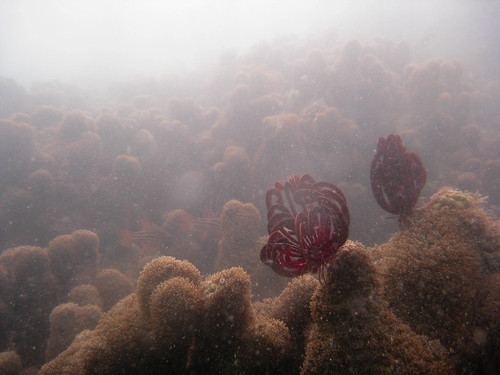
This is where adult crinoids hang out!
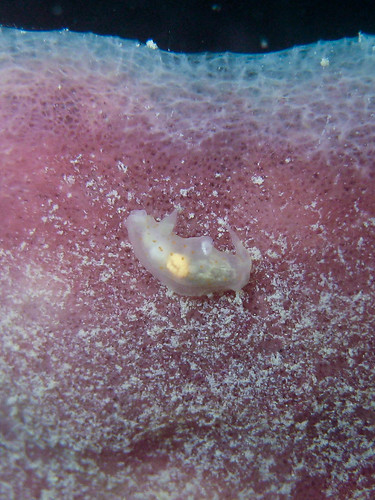 Here’s something else I found on a barrel sponge. At this young age, this Gymnodoris rubropapulosa nudibranch has a body so translucent that we can look right through it. It is just developing its diagnostic orange spots and it only has a little tiny knob for a gill.
Here’s something else I found on a barrel sponge. At this young age, this Gymnodoris rubropapulosa nudibranch has a body so translucent that we can look right through it. It is just developing its diagnostic orange spots and it only has a little tiny knob for a gill.
When it grows up, this cute little nudibranch will be a ‘voracious predator’ of other sea slugs like nudibranchs, sacoglossans and sea hares. Among its prey is Ceratosoma sp.
Gymnodoris rubropapulosa has a wide distribution; it has been recorded in Indonesia, Singapore, Hong Kong, and even in Tanzania!
Some Gymnodoris nudibranchs secrete nasty acids and chemicals, so its bright colours might just be a way of warning others on the reef to stay away!

This is what that little Gymnodoris nudibranch will grow up to look like.
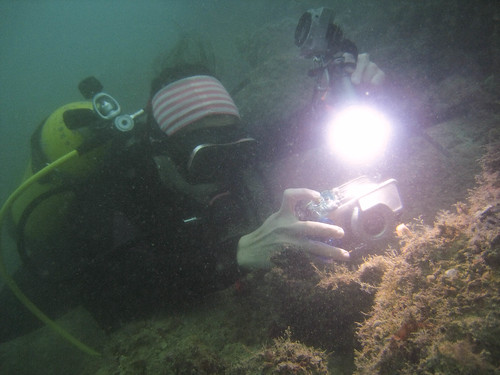
And this is Hantu Blog reef guide Lam Peimin photographing that adult Gymnodoris nudibranch.
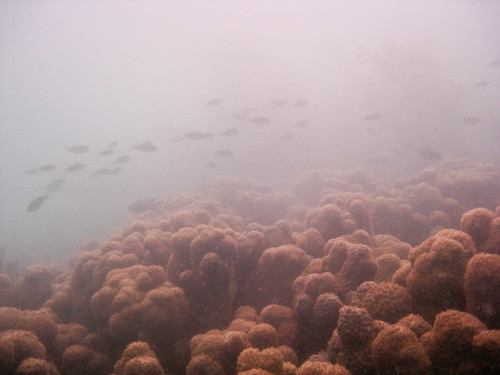
There was a lot of activity on the reef today. Divers also spotted a shark that swam over their heads, and a mommy octopus that was guarding her clutch of eggs in the crevice of a rock. It was kind of beautiful and sad to see the mommy octopus as we knew that she was in fact, a dying octopus. Mother octopi are very devoted mothers, and stay with their eggs for as long as 50 days to protect them and aerate the water around them until all the eggs hatch. During this time she will not feed. By the end of the 50 days, she will be so weak, she will not have any energy left to feed herself. She does this to ensure the survival of her babies, so we can help her by taking care of the reef so the baby octopi have many places to hide, and have a fighting chance at survival.

There were a lot of nudibranches out today. Here’s a massive giant of a Ceratosoma gracillimum (R) next to a Pteraeolidia ianthina (L). Lucky for the Pteraeolidia nudibranch, the Ceratosoma eats sponges.
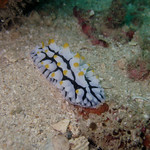




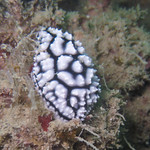
As usual, there was plenty of nudibranches. Clockwise from top: Phyllidia varicosa, Thuridilla gracilis, Cuthona sibogae, Glossodoris atromarginata, Phyllidiella pustulosa (juvenile), Phyllidiella pustulosa.

We often see conch shells on sale at tourist shops, but do you know what the animal looks like? Maybe if you met it face to face, you might not be so ready to slurp it up with blachan because the conch snail has eyes that look very much like ours! I met the one above on the sea bed.
And this one in the video was found along the reef flat.
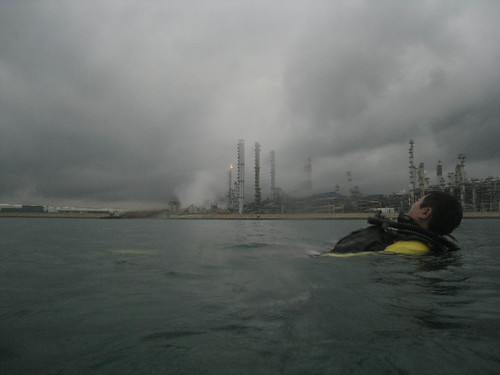
We surfaced from our last dive to a gray sky that was about to open up into a storm. Right next to our boat was the Shell Bukom petroleum refinery. It is very surreal to be diving next to such heavy industry, but it is very important to note despite the development, there is still a healthy coral reef with lots of diversity and organisms to be discovered. This means that if we can manage and maintain the processes with which we choose to develop our coastline, we can still enjoy the pleasure and benefits of our urban city being next to a living reef.
For more pictures from this dive, visit the Hantu Blog Gallery.

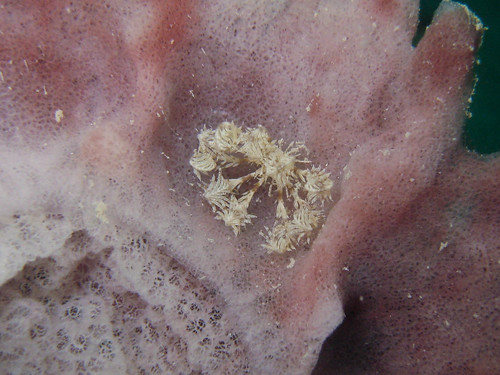
 Posted in
Posted in 



 content rss
content rss
COMMENTS